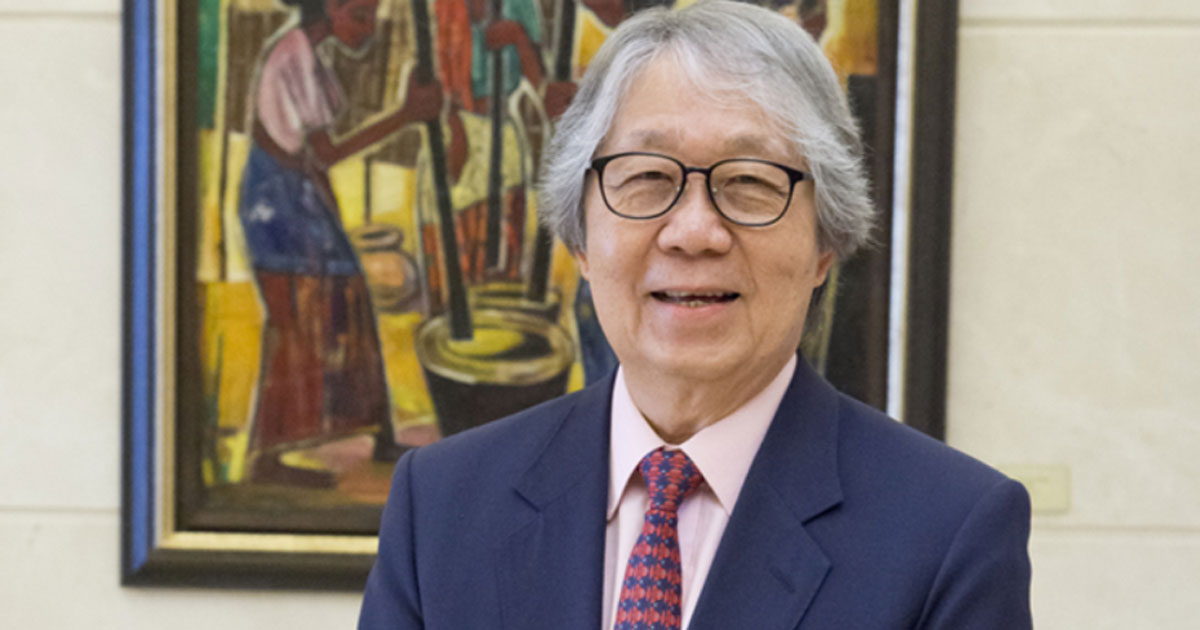If there is one authoritative voice that Singaporeans of all political stripes can turn to for some level-headed advice this novel coronavirus season, it is probably Tommy Koh.
In a Facebook post on Feb. 13, Koh highlighted that he wrote a piece for The Straits Times as he "wanted to remind fellow Singaporeans that we have gone through three much bigger crises before".
The three bigger shocks, according to Koh in chronological order, were the Japanese Occupation during World War II, the August 1965 sudden independence of Singapore, and the Severe Acute Respiratory Syndrome epidemic.These were his main points:
1. Japanese Occupation
As Singapore’s Ambassador-at-Large and rector of Tembusu College, National University of Singapore, Koh's prolific statesman-like demeanour has its advantages, especially in times like this when he is calling for calm.
In his piece, he wrote that he wanted to appeal to the better angels of our nature as Singaporeans.
He was doing so by reminding Singaporeans that we have gone through bigger crises before and that we are tough and resilient to ride it out each time.
Through the crises, we remained united, courageous and caring.
Koh recalled how his middle-class family survived with neirhbours of different ethnicities along Shanghai Road during the Japanese occupation of Singapore because there was a high degree of trust to the extent they never locked their front doors
They shared food like sweet potato and caught eels from the monsoon drains and even shared medicine with whoever was sick
2. Sudden independence in 1965
Koh then wrote about how Singapore's early leaders did not think the country could survive without joining Malaysia.
But after the separation of Singapore from Malaysia in August 1965, there was a short period of anguish followed by getting down to work to forge a new nation.
Back then, unemployment was high and there were no manufacturing jobs.
Singaporeans suffered from poor health and tuberculosis was rampant.
Singaporeans were segregated along racial lines as communities had their own schools.
But the people then embraced the value proposition that no one owed Singapore a living
Koh wrote: "The progress of Singapore, during the past 54 years, has been nothing short of a miracle."
"The miracle is, however, human-made and not heaven-made."
What Singapore had were honest political leaders, excellent public service, and hardworking people, who Koh credited for having "devotion to education and adaptability".
3. SARS in 2003
And the most recent example of Singapore being tested was in 2003, when it was attacked by SARS, which had a mortality of 10 percent.
From March to July that year, Singapore was at war with the disease that seemingly appeared out of nowhere overnight.
Three Singapore women were on vacation in Hong Kong and brought the disease back here.
Eventually, one woman died and two survived.
The World Health Organisation described the way Singapore fought SARS as exemplary.
And who was to be hailed for their efforts?
Koh gave credit to the people and the doctors and nurses that fought this battle in Singapore.
He wrote that Singaporeans behaved in an "admirable" way when fighting SARS.
There was no panic and they monitored their own temperatures.
There was also a remarkable degree of solidarity.
Unlike other places where healthcare workers refused to go back to work, Koh noted that doctors and nurses here volunteered to work at Tan Tock Seng Hospital, the hospital dedicated to fighting and treating SARS cases.
By the end of the fight, five healthcare workers here died during SARS.
They were a hospital attendant, two nurses, and two doctors.
With these three major crises in the last 70 years, Koh wrote that Singaporeans are reminded that they have been tested before and have rose to the occasions.
Top photo via Esplanade
If you like what you read, follow us on Facebook, Instagram, Twitter and Telegram to get the latest updates.
